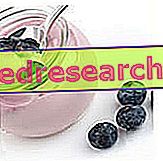Generality
Dry shampoo is a very useful cosmetic product to revive the hair in a few moments making it look like just washed.

Dry shampoo, therefore, can be considered as a real " emergency remedy " to use when you have little time available, but you want to have a fresh and tidy look.
The ingredients contained in this particular type of shampoo have the function of adsorbing excess sebum, reducing the "greasy" or "dirty" effect and giving the hair an appearance of cleanness.
However, despite the effectiveness of this product, in no case should it be considered as a substitute for the classic water and shampoo cleansing.
What is that
What is Dry Shampoo?
Dry shampoo is a cosmetic product used to cleanse hair without the use of water; in other words, it is used for cleaning dry hair .
Shampoos of this type are available everywhere, from the supermarket to the perfumeries.
Depending on your needs or preferences, you can choose between two different types of dry shampoo: loose powder and spray . The dry shampoo in spray is contained in pressurized cans that exploit the action of special compressed gases to release the product from the nozzle placed on top of the container. The dry shampoo in loose powder, on the other hand, is contained in normal containers with caps, generally made of plastic.
Of course, dry shampoo in spray is more practical to use than free powder; however - due to the presence of flammable gases and under pressure - it must be stored in a cool place away from heat sources.
Ingredients
What does Dry Shampoo contain?
The dry shampoo is able to give the hair a " freshly washed " look without using water. This is possible thanks to the ingredients it contains. Basically they are solid substances capable of absorbing the sebum present on the scalp and hair, eliminating the annoying "greasy effect" that characterizes a dirty hair, or that has already been washed for a few days.
Among the ingredients that can be included in the composition of a dry shampoo, we recall:
- Clay : it is a substance of natural origin with known and strong adsorbent and opacifying properties. Depending on the type of clay used, the color can be variable.
- Corn starch and rice starch : also in this case, these are ingredients that can absorb the sebum that accumulates on the scalp, giving the hair a non-greasy appearance. Both starches are fine whitish powders.
- Talc : is an inorganic salt consisting of magnesium silicate and aluminum silicate. It is a greyish-white powder and has a good ability to absorb sebum.
In the formulation of a dry shampoo it is also possible to add perfumes - in order to make the use of the product more pleasant - and possibly dyes, in order to adapt the dry shampoo to the color of the hair. In fact, the aforementioned powders generally have a whitish or greyish-white color which - despite the careful removal of the product after application - could alter the natural color of the hair, leaving a grayish halo that gives the hair an "off" appearance. Therefore, to overcome this problem and to meet the needs of consumers, the cosmetics industry has introduced dry shampoo lines suitable for different shades of hair color (dry shampoo for light hair, for brown hair, for dark hair, etc.).
Curiosity
The use of powders with adsorbent properties for cleaning hair without water is not recent, but has its roots in the very distant past. In fact, it seems that the custom of applying clay to hair in order to cleanse it was widespread in Asia as early as the fifteenth century.
Other Ingredients
Of course, in addition to the ingredients directly responsible for the absorption of sebum, perfumes and dyes, dry shampoo can also contain other substances necessary for the creation and maintenance of the cosmetic formulation in question.
These ingredients include:
- Preservatives, such as, for example, benzyl benzoate, a synthetic compound also possessing the fixing properties of perfume. Preservatives may be present in both types of dry shampoo (spray and free powder).
- Anti-caking agents, such as magnesium stearate. These ingredients are used to prevent the solid particles of the adsorbent substances from clumping, rendering the product unusable. Again, these are ingredients that can be added to either a dry powder free shampoo or a dry spray shampoo.
- Solvents, such as denatured alcohol. This ingredient is part of the composition of many dry spray shampoos, in which it has the task of keeping the particles of adsorbent substances suspended until they are delivered through the special nozzle.
- Gases under pressure, such as butane, propane, isobutane, etc. Of course, these substances are only present in dry spray formulated shampoos. They are needed to dispense the product from the canister.
Clearly, these are just a few examples of the possible ingredients with which a dry shampoo can be formulated. The composition of cosmetics of this type, in fact, varies according to the brand and the manufacturer.
Mode of use
How is Dry Shampoo used?
Using dry shampoo is a very simple and quick process. In fact, whether it is dry shampoo in loose powder or in spray form, it is sufficient:
- Apply the product evenly over the entire foliage and, in particular, to the hair root. Dry spray shampoo allows a simpler and more precise application; while the dry powdered free shampoo must be distributed evenly on the garment with the help of hands;
- After applying the shampoo, leave for 3-5 minutes;
- Finally, brush the hair to remove all traces of dust. Alternatively, the dry shampoo can be removed with the aid of a towel.
After these operations, the hair will be matted and volumized, appearing cleaner in this way. However, it is good to remember that dry shampoo does not clean the hair thoroughly, let alone the scalp.
When to use it
When can Dry Shampoo be used?
As mentioned, dry shampoo is an emergency remedy that must be used only occasionally in those situations where there is no possibility (due to lack of time or for any other reason) to wash the hair in the "traditional" way, so how it can be useful to "refresh" the hair between one wash and another.
Dry shampoo can also be used by people who suffer from greasy hair and do not want to wash daily. However, even in this case, the use of dry shampoo should be limited and adequately alternated with traditional washing.
As repeatedly stated, the dry shampoo is not able to perform a deep cleansing of the hair or scalp, for which it is, instead, necessary to wash the hair with water and "classic" shampoo.
Only with a real wash, in fact, it is possible to remove and remove excess sebum, accumulated dirt (due, for example, to atmospheric pollution, dust, etc.) and cellular debris deriving from the replacement of the scalp.
Cleaning and proper hygiene of hair and scalp, in fact, are very important for maintaining beauty and well-being of the same, exactly as it happens for the skin.
Side effects
Possible Undesirable Effects of Using Dry Shampoo
Dry shampoo is usually well tolerated by most people who use it. However, even if rarely, following its use, some individuals may experience itching or excessive dryness of the scalp. In such situations, it is good to avoid using the product again. Furthermore, the presence of any allergies to one or more of the ingredients that compose it cannot be excluded.
When to Avoid It
When shouldn't Dry Shampoo be used?
Dry shampoo should not be used in case of known hypersensitivity to one or more of the ingredients it contains.
At the same time, the use of dry shampoo should be avoided - unless a different medical opinion is given - by people suffering from scalp pathologies (such as, for example, seborrheic dermatitis of the scalp) that need specific treatments and products for hair cleansing.
Alternative remedies
Do-It-Yourself Remedies Alternative to Dry Shampoo
In emergency situations, when it is not possible to wash the hair in the traditional way and when one is not equipped with a dry shampoo ready for use, it is possible to use alternative substances with adsorbent capacity. The method of use is the same as for a dry shampoo: apply the product, leave on for a few minutes and remove it with a brush or a towel. Among the alternative substances most commonly used to replace dry shampoo, we find:
- Borotalco : it is the grandmother's remedy par excellence against dirty and greasy hair; moreover, it leaves a pleasant perfume on the hair. On the other hand, when used on medium-dark or dark hair tones, it can give an excessively opaque, graying and / or dull look.
- Maizena : cornstarch is nothing but refined corn starch. It is a product normally used in the kitchen - and, therefore, available in many pantries - which can be transformed into a last-minute dry shampoo if needed. Compared to talcum powder it has the advantage of leaving fewer traces; however, it is completely odorless and does not leave any scent on the foliage.
- Opaque powder: another alternative to the extremely popular dry shampoo is represented by the matting powder. Particularly useful for this purpose are the powder-free loose powder (the so-called translucent mineral powders).
Of course, also in this case, these are remedies to be used rarely and in conditions of real necessity. In no case, the use of these products - let alone the use of the actual dry shampoo - must be considered as a substitute for normal hair washing.



